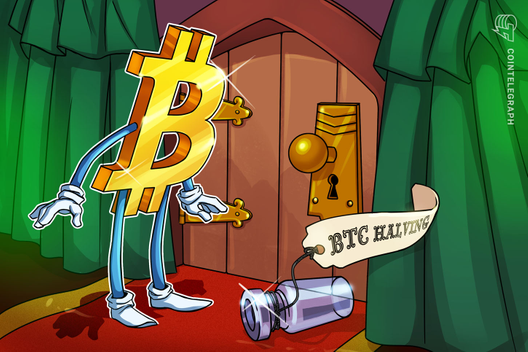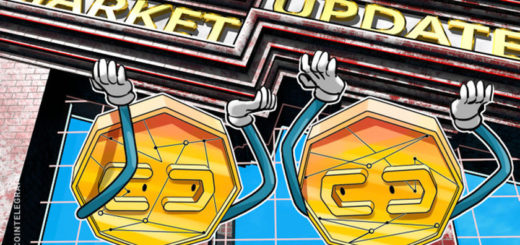Halving do Bitcoin – Mas afinal, o que isso significa?

Um guia para o halving do Bitcoin – um evento pré-agendado que reduzirá a oferta do ativo, potencialmente elevando o preço.
Will the Bitcoin price change?
Historically, the price has gone up following a halving, but it ultimately depends on the supply/demand ratio.
Essentially, Bitcoin halving cuts down the supply of BTC, making the asset more scarce. If the demand is there, the price is likely to increase. There are also some historical precedents. On Nov. 28, 2012, the day of Bitcoin’s first halving, the cpryptocurrency’s price rose from $11 to $12, and continued to climb up throughout the next year, reaching $1038 on Nov. 28, 2013.
Roughly four years later, a month before the second halving, Bitcoin’s price started to follow a similar, bullish pattern. It surged from $576 on June 9 to $650 on July 9, 2016 — the day the block’s reward was reduced by half for the second time in the asset’s history. Again, BTC continued to accelerate through the next year, albeit with occasional turbulence, and traded at $2526 on 9 July 2017.
Will it be the same next time? Skeptics believe that the halving has already been priced in (remember this year’s epic, but short-lived systematic price increase?). Although, there is no scientific way to verify this.
Moreover, the industry has drastically changed over the last four years, as cryptocurrencies — and Bitcoin in particular — became an essential part of mainstream news coverage. Still, some people might be tempted to take the chance, especially given the previous patterns exhibited around Bitcoin halvings.
Consequently, if history repeats itself and the Bitcoin price starts going up in April 2020, even more traders might start buying the asset out of a fear of missing out, thus stimulating the demand, and, ultimately, the price.
Will Bitcoin miners still be interested?
Some smaller players might be forced to leave (or at the very least, upgrade their hardware).
At this point, the majority of Bitcoin mining is performed by giants like Bitmain, the China-based company that was worth $12 billion at some point in 2018. Bitmain validates blocks with thousands of loud, extremely powerful and high-energy-consuming machines called application-specific integrated circuit miners, which are much more efficient compared to the basic setups used by students or other individuals.
Related: Hydro Mining, Explained
As the block reward becomes less significant, mining rigs that are barely covering production costs will be forced to quit the market. There will still be firms willing to mine Bitcoin at the reduced rate, but the market might become less decentralized as a result (i.e., the pie will be cut into fewer pieces). Still, new and more efficient ways to mine BTC could emerge, potentially enabling smaller businesses to partake.
When will the next Bitcoin halving take place?
The week commencing 18 May, 2020, based on current performance, but it might be 14 May.
The date is not 100% certain at this point because the time taken to generate new blocks may speed up or slow down. On average, the network produces one block every ten minutes.
The very last halving is expected to occur some time in the year 2140 as the 21-millionth BTC is mined. Once that happens, miners will stop receiving block rewards, but will keep the remaining source of revenue — fees paid by the transactions, which they also collect.
How much Bitcoin will miners receive after the next halving?
Every new block will produce 6.25 BTC. At inception, the reward was eight times as much.
When Bitcoin was launched in 2009, miners were receiving 50 BTC per block. Thus, a total of 10,500,000 BTC was generated before the next halving took place in November 2012, when miners began to receive 25 BTC for each block.
It may seem like an overly generous bonus (more than $365,000 per block, based on current value), but the network was only just starting to develop at the time, and no one knew for certain whether people would continue to find the concept worthy of investing their computer processing power into the Bitcoin blockchain to keep it alive.
Related: What Powers China’s Crypto Mining Industry, and Is It Sustainable?
Another fact to take into account is that the all-time high market price for that period was $31 per BTC in June 2011, but that “bubble” later burst and Bitcoin was back to $2 before the year’s end. Nevertheless, mining has ultimately turned out to be much more profitable for those who got in early, which is a big part of the reason Bitcoin critics call it a Ponzi scheme.
The second Bitcoin halving occurred on July 6, 2016, as block number 420,000 was produced and miners began collecting 12.5 BTC for every new block, which is the current rate. The third halving will reduce that rate in half yet again, which will lower the block reward to just 6.25 BTC, or around $45,000 given the current market price.
Ok, but what’s a “block reward”?
In short: the amount of BTC a miner receives for every new block they add to the blockchain.
To explain this concept in more depth, let’s briefly go back to the roots of Bitcoin — the blockchain. In the most basic sense, a blockchain is a digital ledger that stores information about its transactions in blocks that are each around 1 MB in size. For instance, when person A sends Bitcoin to person B, this transaction will be stored on a block, along with around 500 other transactions that happened at around the same time.
A block reward is the amount of cryptocurrency that miners receive when they successfully validate/mine a new block by solving highly complex mathematical problems with their mining hardware. It is a reward for their hard work.
What is Bitcoin halving?
An event that halves the rate at which new Bitcoins are created. It occurs once every four years.
As many know, Bitcoin’s (BTC) supply is finite. Once 21 million coins are generated, the network will stop producing more. That is one of the main reasons Bitcoin is often referred to as “digital gold” — just like with the yellow metal, there is only a limited amount in the world, and someday, all of it will have been extracted.
Right now, there are around 18 million BTC in circulation, which is roughly 85% of the total cap — but it doesn’t mean that the cryptocurrency is about to reach its limit any time soon. The reason is the protocol, which has been coded into the blockchain from the very start: Every 210,000 blocks, it performs the so-called Bitcoin “halving” or “halvening,” and producing new coins becomes more difficult — just like in gold mining where finding new deposits becomes more challenging over time.
More specifically, the protocol cuts the block reward in half. So, every time a Bitcoin halving occurs, miners begin receiving 50% fewer BTC for verifying transactions.



